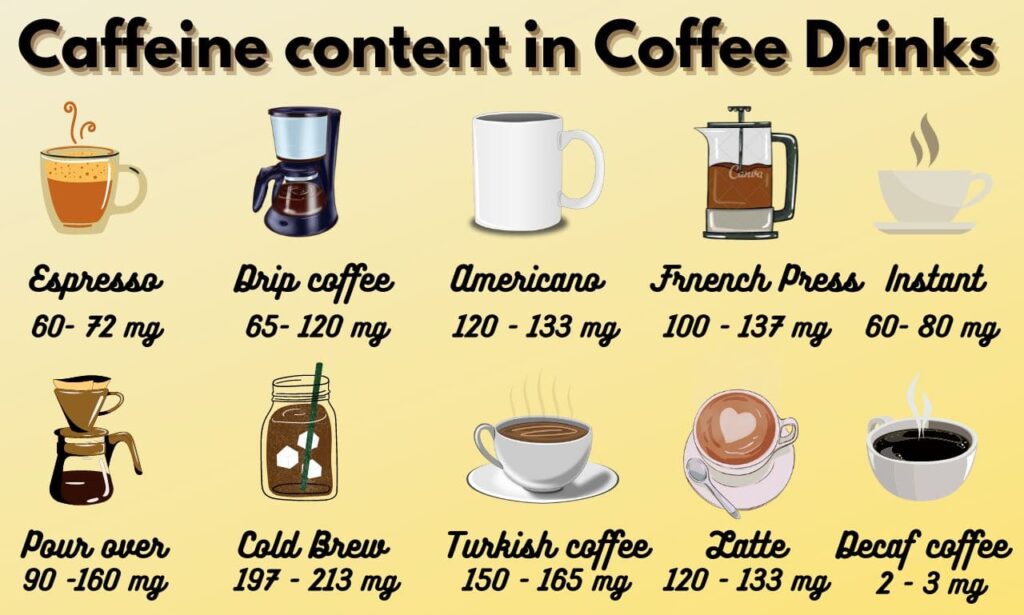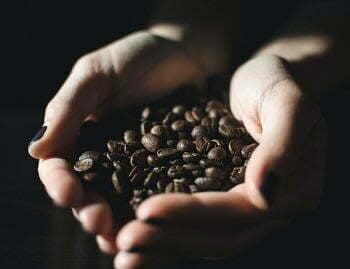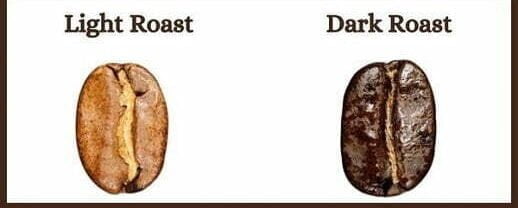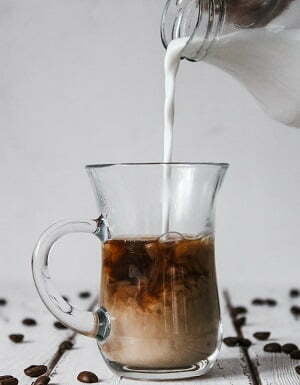A Regular 8 oz cup of coffee contains almost 80-120 mg of caffeine. However, the caffeine content can vary depending on factors like the variety of coffee beans, the amount of beans you use, the roast style, and the brewing method.
Do you know what makes coffee addictive? Yes! It’s the caffeine content present inside the coffee beans.
According to studies, there are several benefits of caffeine. To name a few, it can improve your short-term memory, make you active, reduce fatigue, and help you lose weight.
Coffee is the most commonly consumed and one of the healthiest sources of caffeine.
But as we know, the famous proverb “Excess of everything is bad” caffeine also has some cons if consumed in excess.
And that’s why many people are concerned about the caffeine content in their coffee drinks.
What Factors affect the Caffiene in Coffee?
The caffeine content in coffee depends on many factors such as the type and origin and coffee beans, the coffee brewing method, the roast level and the serving size.
Type and origin of coffee beans: Different coffee bean varieties pack different amount of caffeine. Generally, robusta beans have almost double the caffeine of the more premium arabica beans. But even among Arabicas, the exact origin and growing conditions can impact caffeine levels. For example, coffee from Indonesia naturally have more caffeine than coffee from Ethipoia.
The coffee brewing method: How you brew makes a big difference. Unfiltered methods like French press and Turkish Coffee let more caffeine through compared to filtered drip brew. Espresso also delivers a concentrated caffeine kick in a small serving.
The roast level: The longer roasting period of dark roasts decreases the moisture content and expands the bean. That’s why on volumetric basis Dark roasts have less caffeine compared to lighter roasts.
The serving size: Well, this one’s a no-brainer! The bigger the coffee serving, the more caffeine you’re getting. So while espresso has more caffeine per ounce, drinking a regulat 8 oz cup of drip coffee will likely give you a bigger caffeine boost.
Caffeine content Comparison for different Coffee brewing methods and drinks
I have conducted research for caffeine content in12 different most famous types of coffee drinks and brewing methods i-e Espresso, Drip coffee, Americano, long black, French Press, Latte, Cappuccino, Decaffeinated coffee, Cold Brew, Pour Over, Instant coffee, and Turkish coffee.

| Drink type | Caffeine per serving | Size of cup | Caffeine per oz |
|---|---|---|---|
| Espresso (single shot) | 60 – 72 | 1-1.25 oz | 60 – 70 |
| Espresso (double shot) | 120 – 133 | 2-2.25 oz | 60 – 70 |
| Drip coffee | 65 – 120 | 8 oz | 8 – 15 |
| Americano ( made with double-shot Espresso ) | 120 – 133 | 8 oz | 15 – 17 |
| long black ( made with double-shot Espresso ) | 120 – 133 | 6 oz | 20 – 22 |
| French Press | 100 – 137 | 8 oz | 13 – 17 |
| Latte ( made with double-shot Espresso ) | 120 – 133 | 12 oz | 10 – 11 |
| Cappuccino ( made with single-shot Espresso ) | 60 – 72 | 6 oz | 12 – 14 |
| Decaffeinated coffee | 2 – 3 | 8 oz | 0.25 – 0.37 |
| Cold Brew | 197- 213 | 16 oz | 12 – 13 |
| Pour Over | 90 – 160 | 8 oz | 12 – 20 |
| Instant coffee | 60 – 80 | 8 oz | 8 – 10 |
| Turkish Coffee | 150 – 165 | 2 oz | 75 – 85 |
Espresso Caffeine Content
Espresso is a coffee brewing method in which a pressurized hot stream of water is passed over fine coffee grounds. Espresso has 60-72 mg of caffeine per ounce. This makes espresso the most caffeine concentrated coffee drink.
Drip Coffee Caffeine Content
Drip coffee machines work by passing hot water over a filter filled with coffee grounds. An 8 oz cup of drip coffee contains more caffeine than a single shot of espresso, which is around 65 -120 mg.
Americano Caffeine Content
Americano is usually prepared by pouring 4 to 6 ounces of water over a freshly brewed double shot of espresso. So, it has the same caffeine as the double shot (120-133 mg)
French Press Caffeine Content
French Press is a full immersion coffee brewing method in which water is allowed to steep with coarse grounds for 4 to 6 minutes. An 8 oz cup of French Press can contain 100 – 137 oz of caffeine depending on steeping time and the type of coffee beans.
Latte and Cappuccino Caffeine Content
Latte and Cappuccino are similar drinks; made with milk and double-shot Espresso so they have around 120-133 mg of caffeine. The only difference is Cappuccino has a 1:1 of milk and Espresso while Latte has 3:1 of milk and espresso. As Cappuccino is denser, it has more caffeine content per ounce than a Latte.
Decaffeinated Coffee Caffeine Content
In Decaf Coffee, 97% of the Caffeine is removed from coffee beans using organic solvents and carbon dioxide. Decaffeinated coffee beans will still have a small amount of caffeine, around 0.25-0.37 mg per ounce of coffee drink.
Cold Brew Caffeine Content
Cold brew coffee is brewed at room temperature for an extended period of more than 12 hours. It has smooth, less bitter, and chocolaty flavors. The usual serving size of cold brew is 16 oz which has a high amount of caffeine, up to 197-213 mg per serving.
Pour-over coffee Caffeine Content
Pour-over is a manual brewing method where hot water is poured over ground coffee beans placed in a filter. Typically, the brewing process in a pour-over method is longer; that’s why it has more flavors and caffeine than coffee prepared through drip coffee machines which is around 90-160 mg.
Instant Coffee Caffeine Content
Instant coffee is made by brewing regular coffee beans in large batches and then concentrating and condensing the brewed coffee into small granules. These granules can then be quickly dissolved in water or milk to make a quick cup of coffee. A typical 8-ounce cup of instant coffee can contain up to 60 to 80 mg of caffeine.
Turkish Coffee Caffeine Content
Turkish coffee is made in Cezve by dissolving fine coffee grounds into water and milk. This is an unfiltered type of coffee drink; that’s why it has the highest caffeine content, up to 165 mg of caffeine in a mere 2-ounce serving.
How much caffeine in a coffee bean | Arabica vs Robusta
According to research, most coffee beans have almost 10-12 mg/g of caffeine. And there are 6 to 7 beans in a gram, so there are 1.4-2 mg of caffeine in a single coffee bean.
Robusta coffee beans have more caffeine than Arabica beans.
On average, Robusta beans have 18-20 mg/g of caffeine, while Arabica beans have 8-12 mg/g of caffeine.
If you are a caffeine lover, you might be tempted to buy Robusta beans next time you go shopping. But Robusta beans are not liked by many coffee enthusiasts
The reason is Robusta beans have a harsh and bitter taste and lack the complex flavors and aromas found in higher-quality Arabica beans.
Does Grind size affect the amount of caffeine in coffee?
Grind size does not have a noticeable effect on the caffeine content in brewed coffee. However, there can be a slight difference as finer grinds can extract marginally more caffeine compared to coarser grinds during the brewing process. Although, the difference will be very minimal.
You should never adjust the grind size solely for the purpose of increasing or decreasing caffeine content. The ideal grind size should be selected based on optimizing extraction for the particular brewing method – like a coarse grind for French press or a fine grind for espresso.

What roast has the most caffeine | Dark Vs Medium Vs Light
Some people say there is more caffeine in dark roasts because they produce a stronger coffee drink, while others may say that light roasts have more caffeine because the roasting process eliminates some caffeine.
Well, in actuality, both opinions are wrong. The caffeine in the coffee beans remains the same throughout the roasting process.

There is no evidence that high temperatures in the coffee roasting process can reduce the amount of caffeine in darker roasts. However, because of the high temperature, most of the moisture content evaporates from the coffee beans, and the beans lose their weight and expand in size.
That’s why lightly roasted coffee beans have a little more caffeine content on a volumetric basis than dark roast because the same volume will occupy fewer coffee beans of darker roast than lighter roast.
And on a mass basis, the dark roast will have a little more caffeine because the same mass of both roasts will have more beans of the darker roast.
But if you measure all different roasts, bean to bean, there will be no difference in the amount of caffeine.
So, if you want to have more caffeine, there is one simple rule “Add more coffee beans to your cup”.
Does Milk Reduce the Caffeine in Coffee?
Nope, adding milk to your coffee won’t reduce the actual caffeine content! The amount of caffeine is solely based on the coffee brewing process and beans.
When you add milk to your coffee, you are diluting the beverage, but the total caffeine content in the drink remains constant.
However, some studies show milk can slow caffeine absorption slightly. The proteins in milk bind with caffeine and delay how quickly it reaches your bloodstream after drinking.

Caffeine Content in Drinks from Popular Coffee Brands
Here’s a breakdown of the caffeine content in drinks from major coffee brands like Starbucks, Dunkin’, Tim Hortons, Dutch Bros, and McCafe.
Caffeine content in Starbucks Coffee Drinks
| Drinks | Short (8 oz) | Tall (12 oz) | Grande (16 oz) | Venti (20 oz) |
|---|---|---|---|---|
| Blonde Roast | 180 mg | 270 mg | 360 mg | 475 mg |
| Brewed Decaf Coffee | 15 mg | 20 mg | 25 mg | 30 mg |
| Pike Place Brewed Coffee | 155 mg | 235 mg | 310 mg | 410 mg |
| Americano | 75 mg | 150 mg | 225 mg | 300 mg |
| Lattes | 75 mg | 75 mg | 150 mg | 150 mg |
| Mochas | 90 mg | 95 mg | 175 mg | 185 mg |
| Espresso | 75 mg (solo) | 150 mg (doppio) |
Caffine Content in Dunkin’s Coffee drinks
| Drinks | Small (10 oz) | Medium (14 oz) | Large (20 oz) |
|---|---|---|---|
| Brewed Coffee | 180 mg | 210 mg | 270 mg |
| Decaf Brewed Coffee | 7 mg | 10 mg | 15 mg |
| Extra Charged Coffee | 180 mg | 252 mg | 360 mg |
| Dark Roast Coffee | 117 mg | 164 mg | 235 mg |
| Espresso | 118 mg (solo) | ||
| Americano | 237 mg | 284 mg | 371 mg |
| Latte | 118 mg | 166 mg | 252 mg |
Caffeine Content in Tim Hortons Coffee Drinks
| Drinks | Small (10 oz) | Medium (14 oz) | Large (20 oz) |
|---|---|---|---|
| Original Blend Coffee | 140 mg | 205 mg | 270 mg |
| Decaffeinated Coffee | 6 mg | 9 mg | 12 mg |
| Dark Roast | 135 mg | 200 mg | 265 mg |
| Espresso Shot | 45 mg (Solo) | ||
| Americano | 95 mg | 140 mg | 170 mg |
| Hot Lattes | 35 mg | 50 mg | 75 mg |
Caffeine Content in Dutch Bros Coffee Drinks
| Drink | Small (12 oz) | Medium (16 oz) | Large (20 oz) |
|---|---|---|---|
| Dutch Coffee | 93.5 mg | 93.5 mg | 187 mg |
| Espresso | 46.75 (single) | 93.5 (double) | 140.25 (triple) |
| Lattes | 93.5 mg | 93.5 mg | 187 mg |
Caffeine Content in Mcdonald (McCafe) Coffee Drinks
| Drinks | Small (12 oz) | Medium (16 oz) | Large (24 oz) |
|---|---|---|---|
| Americano | 71 mg | 142 mg | 178 mg |
| Lattes | 71 mg | 142 mg | 178 mg |
| Premium Roast Coffee | 109 mg | 145 mg | 180 mg |
| Decaf Coffee | 8 mg | 11 mg | 14 mg |
| Espresso | 71 mg (single) | 142 mg (double) |
How much caffeine is too much?
For healthy adults, 400 mg of caffeine is considered safe; that is four regular 8 oz cups of drip coffee or three double shots of espresso.
Note that 400 mg of caffeine is only safe for healthy adults only. That amount is certainly not safe for teens or young children.
Pregnant or breastfeeding women should also limit their caffeine usage to 200 mg per day.
What are the benefits and drawbacks of caffeine
There are many ways caffeine can be good for you. Such as the caffeine:
- Improves the energy level
- Reduces fatigue
- Improves short-term memory
- Increases the health of the brain
- Can lower the risk of diabetes
- Helps in weight loss
- Helps in fighting depression
But as we all know, “excess of everything is bad”. If taken in excess, caffeine can cause the following problems:
- Insomnia or difficulty in sleeping
- Anxiety
- Dehydration
- Blood pressure
- Addiction or dependency
- Irritation in stomach
If you are facing any of the symptoms above, you should immediately cut down on the amount of coffee you drink daily. Or, if you can’t live without coffee, you should try decaffeinated coffee beans.
how to determine the caffeine content in coffee?
Determining the exact caffeine content in your coffee with precision is only possible with a high-tech lab and certainly not feasible for the average coffee drinker.
Caffeine is an organic compound that is difficult to extract and isolate without specialized equipment so it is not possible to measure exact caffeine content at home.
Here are some methods to estimate caffeine content in coffee.
Method 1:
Caffeine testing strips offer a simple solution for checking if your coffee is decaffeinated or not. Just dip the strip into your beverage, and it’ll provide a basic assessment of the caffeine content.
These strips usually have two lines, marked as D and C. If your beverage is decaffeinated, it will only reach the D line, while caffeinated beverages will surpass it.
Method 2:
Another easy method is using coffee-to-caffeine ratios: as a general guideline, multiply the weight of the dry coffee by 10 to get the caffeine content in mg. For example, if you brew coffee with 20 grams of coffee you would get around 200 mg of caffeine in the drink.
While these methods will not provide pinpoint accuracy, they can give you a reasonable estimate of the caffeine levels in your coffee.
FAQs
Is 200 mg of caffeine a lot?
Healthy adults can safely consume up to 400 mg of caffeine in a day. However, teenagers and pregnant women should avoid taking that much caffeine and limit their caffeine intake to 200 mg per day.
Does tea have a Higher caffeine Content than coffee?
Tea leaves (3-4%) have a higher caffeine content than unbrewed coffee beans (1.1–1.5%) but a brewed cup of coffee has more caffeine than a brewed cup of tea.
This is because the coffee brewing process is longer and uses hotter water, which extracts more caffeine from the beans. Additionally, tea leaves do not release all of their caffeine during the brewing process.
How long does caffeine stay in your system?
The level of caffeine peaks in your body one hour after having it and remains at the same level for 4-6 hours. It takes almost 10 to 12 hours to eliminate all the caffeine from the body after having a drink.
That’s why it is not recommended to have caffeine-based drinks after the evening as it can cause sleeping problems.
Which coffee has the Least caffeine?
Decaf coffee has the least amount of caffeine. Around 97.7% of the caffeine is removed from the coffee beans during the decaffeination process.
Which coffee has the most caffeine?
Turkish coffee and Espresso are the most concentrated coffee brewing methods and have the highest amount of caffeine.
If you want to drink highly caffeinated coffee then use Robusta beans.
Is caffeine a drug?
Yes, caffeine is a drug. It is a natural stimulant that affects the central nervous system, making us feel more alert and awake.
Does Coffee lose its caffeine content over time?
The caffeine content in coffee beans doesn’t change or degrade over time. However, the flavor and quality will deteriorate faster if the coffee isn’t stored properly.
Does Caffeine in Coffee make you Poop?
Yes, caffeine in coffee can have a mild laxative effect on some people. Coffee promotes bowel motility and gastric emptying, which quickens digestion and makes the urge to poop.
Other Interesting Reads:






What an insightful article! I’ve always wondered why my drip coffee at home seems to affect me differently than say, an Americano from a cafe. Now I understand that factors like brew method and type of bean and origin, can really impact the caffeine levels.
Thank you for such a thorough and informative article. Just one thing:
The Method 2 formula for calculating caffeine content is incorrect. The weight of the coffee should be divided by 0.1, not 0.01.
20 ÷ 0.01 = 2000
20 ÷ 0.1 = 200
An easier way of doing the calculation is to multiply by 10.
20 x 10 = 200
This works because multiplying by 10 is the equivalent of dividing by 0.1.
Thanks Meg for pointing out the mistake, fixed it!
I am glad that you find the article helpful